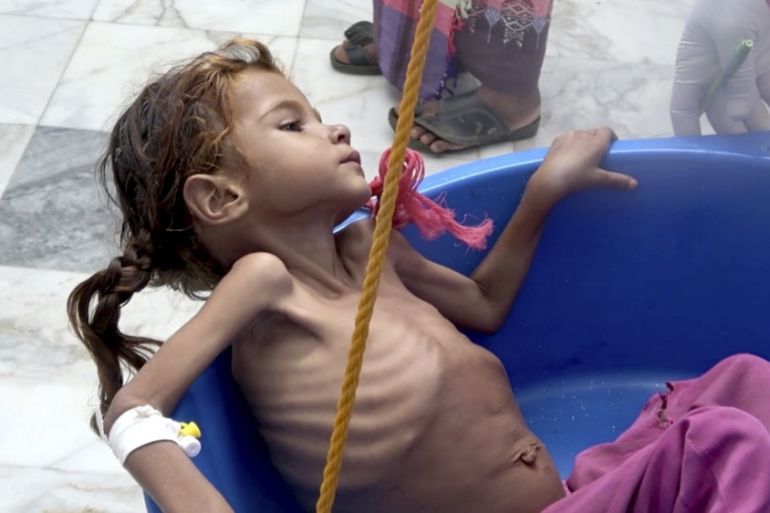Yemen at risk of ‘big famine’: UN humanitarian chief
Undersecretary for humanitarian affairs says clashes around Yemen’s Hodeidah have worsened the country’s food crisis.

The United Nations humanitarian chief warns that Yemen is on the verge of widespread famine, with about half of the population completely relying on humanitarian aid for survival.
Addressing the Security Council on Tuesday, UN Undersecretary-General for Humanitarian Affairs Mark Lowcock said, “there is a clear and present danger of an imminent and great big famine engulfing Yemen.”
Keep reading
list of 4 itemsUS sanctions shipping firm accused of links to Iran, Yemen’s Houthis
Vessel struck in Red Sea as Houthis promise attacks on more shipping lanes
What we know about deadly Houthi attack on cargo ship
Lowcock told the UN’s most powerful body that this famine would be “much bigger than anything any professional in this field has seen during their working lives”.
He said that “the situation is now much graver” than when the world governing body last warned of a risk of famine at the beginning of 2017 and again last November, because “of the sheer number of people at risk”.
According to Lowcock, last month’s estimate that 11 million people could soon face “pre-famine conditions” actually stood closer to 14 million – about half of Yemen’s population.
Lifeline for millions
Lowcock said last month that the worsening food crisis was in large part the result of an intensification of fighting around the key port city of Hodeidah.
“Fierce clashes continue in Hodeidah, including intense fighting, shelling and air raids in Hodeidah City over the last several days,” Lowcock said.
![Lowcock said about half of Yemen's population could soon face 'pre-famine conditions' [Salvatore di Nolfi/EPA]](/wp-content/uploads/2018/10/ede10f7001ba4d859070eadb6052a26c_18.jpeg)
“Yemen is almost entirely reliant on imports for food, fuel and medicines,” Lowcock added. “And the available foreign exchange – from what little remains of oil exports, from money sent home by Yemenis out of the country, and from international assistance – has been simply inadequate to finance adequate levels of imports to support the population.”
Fighting near Hodeidah has escalated since June 13 after the Saudi-UAE alliance launched a wide-ranging operation to retake the strategic seaport.
Hodeidah has been under the control of Houthi rebels since 2014, along with other coastal cities and much of northern Yemen.
|
|
The city’s seaport was responsible for delivering 70 percent of Yemen’s imports – mostly humanitarian aid, food and fuel – pre-2015. The Saudis have accused the Houthis, who reportedly generate $30m to $40m a month in revenue from the port, of using the port to smuggle in weapons from Iran.
Acute malnutrition
At the beginning of 2017, the United Nations and its partners were able to provide aid to three million hungry Yemenis.
Since then, assistance has been scaled up, reaching eight million people in September because of generous funding from donors, Lowcock said, but far below the 14 million people who may need it.
Lowcock said three conditions are required for famine to be declared: At least one in five households faces an extreme lack of food, more than 30 percent of children under the age of five are suffering from acute malnutrition, and at least two out of every 10,000 people are dying every day.
An assessment is now under way across Yemen to measure the risk of famine and initial results are expected in mid-November, he said.
The conflict in Yemen, the Arab world’s poorest country, began with the 2014 takeover of the capital, Sanaa, by Houthi rebels, who toppled the internationally recognised government of President Abd-Rabbu Mansour Hadi.
A Saudi-UAE coalition allied with the government has been fighting the Houthis since 2015.
Civilians have borne the brunt of the conflict, which has killed over 10,000 people and sparked the world’s worst humanitarian crisis and a cholera epidemic.